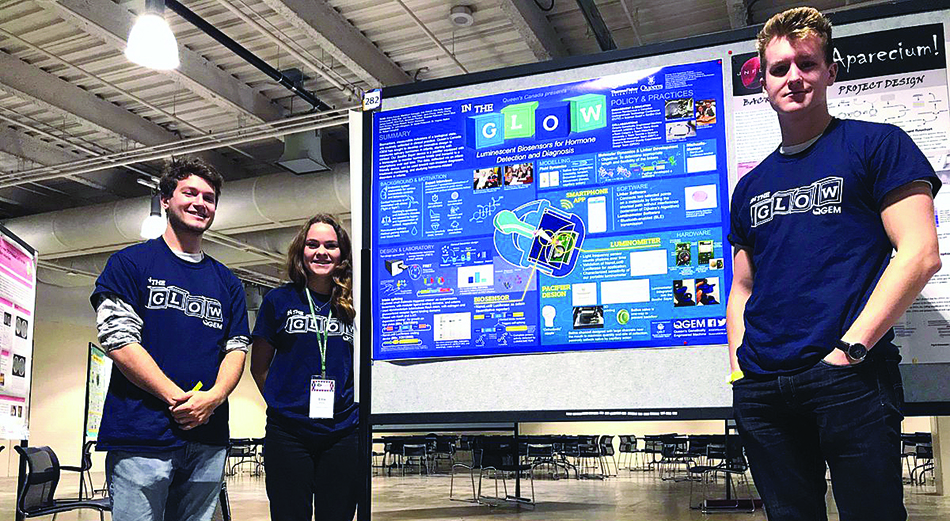
The Queen’s Genetically Engineered Machine (QGEM) team won gold for their work in synthetic biology through research on infant hormone detection Oct. 28.
Participating at the International Genetically Engineered Machine (iGEM) Competition held in Boston, they were one of five Ontario university teams to compete. They were the province’s only group to receive a gold medal, and one of four to win gold nationwide.
Each year, the Massachusetts Institute of Technology (MIT) hosts the event, where student teams across the globe compete to solve current challenges facing the international community. This year’s competition hosted over 300 teams, representing more than 40 different countries.
It provided participants with a kit of biological parts at the beginning of the summer, requiring them to present their final project to a panel of judges and industry experts later that year.
At the competition, the QGEM team presented a model designed to detect and diagnose hormonal imbalances in infants using a luminescent biosensor.
In collaboration with the Queen’s Biomedical Innovation Team (QBiD), the group developed a pacifier that is able to detect salivary cortisol in infants, and transfer the levels to a mobile device using bioluminescence and Bluetooth technology.
In the project, QBiD was responsible for the overall design of the pacifier, while QGEM worked on creating a biosensor for the device.
The team worked to produce engineered protein biological sensors to detect and measure the quantity of hormones present in saliva, and use it as a tool for the diagnosis of hormone disorders.
“The project came from the idea that we could non-invasively collect indicators of biomarkers, and the saliva would be a useful indicator of the child’s health,” QGEM Director Elisha Krauss told The Journal.
The device’s small size was designed to be compatible with a pacifier, which Krauss outlined as the key element to allow for the quick, non-invasive collection and measurement of an infant’s salivary glands.
Krauss said the biosensor isn’t perfect, but the thought and effort dedicated to its construction caught the eye of the panel.
In addition to winning gold at the iGEM competition, QGEM also made the top five for contributions in the categories of Best Poster, Best Presentation, Best Entrepreneurship, Best Product Design, and Best Diagnostics project.
Krauss said work on the project doesn’t stop at the competition.
“We met with members of Autism Ontario over the summer, and we spoke to them about the device and we asked them if they saw us having a quantitative measurement of their children’s wellbeing in any way that would benefit them.”
After hearing about the function and benefits of the device, Krauss said parents of children with autism were “blown away.”
“Most of the time children with autism disorder are non-communicative. [The parents] are unable to express how they are doing, and they don’t have an indicator as to what may be bothering their child,” Krauss said.
“So this was, in their eyes a way to communicate with their children to understand their child’s wellbeing if we can develop it in an accessible way.”
He added the success of the QGEM team couldn’t have happened without the support of the university.
“The team is so thankful for all the resources provided by the University, and hope that the QGEM team in the future continue to flourish.”
Tags
All final editorial decisions are made by the Editor(s)-in-Chief and/or the Managing Editor. Authors should not be contacted, targeted, or harassed under any circumstances. If you have any grievances with this article, please direct your comments to journal_editors@ams.queensu.ca.
